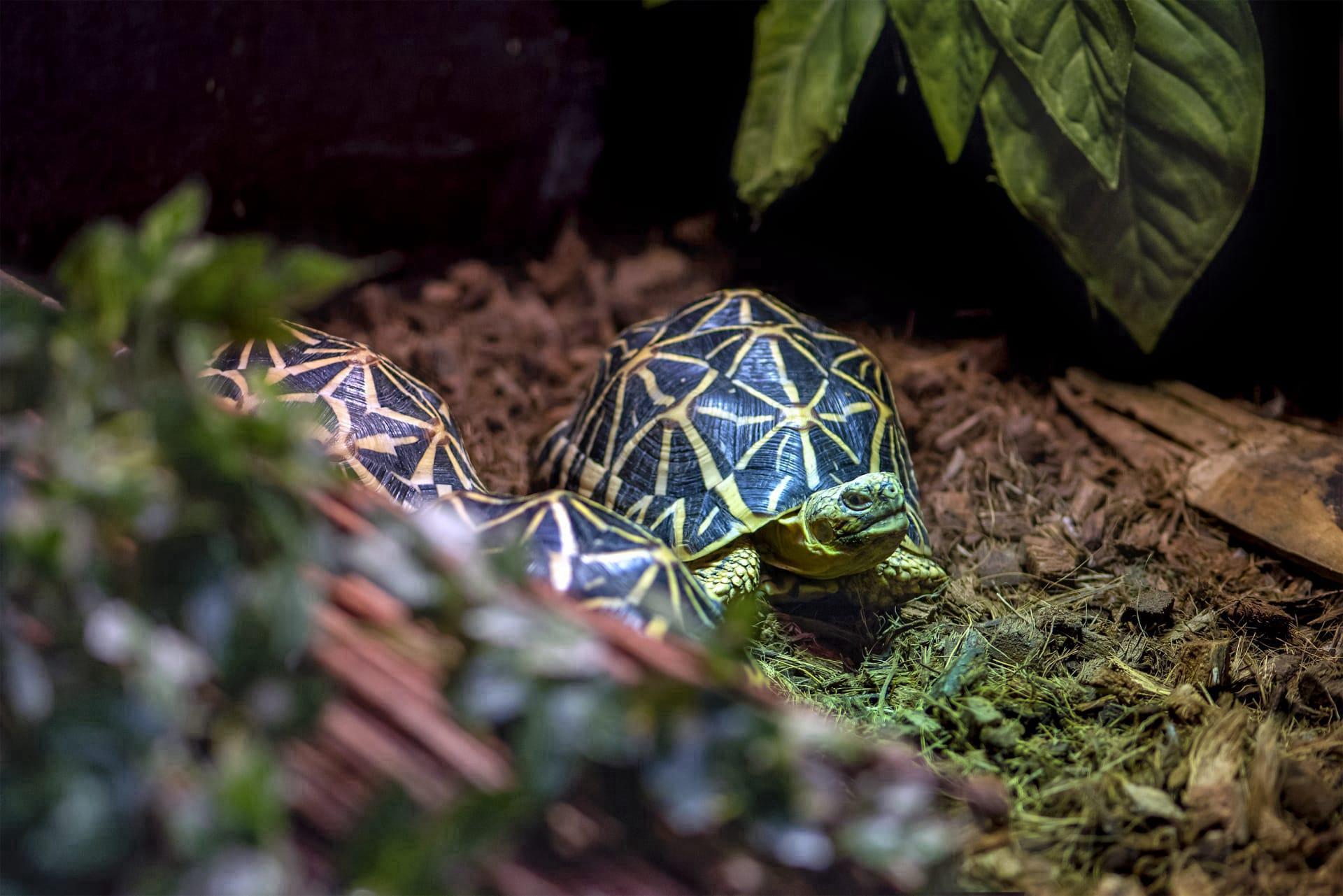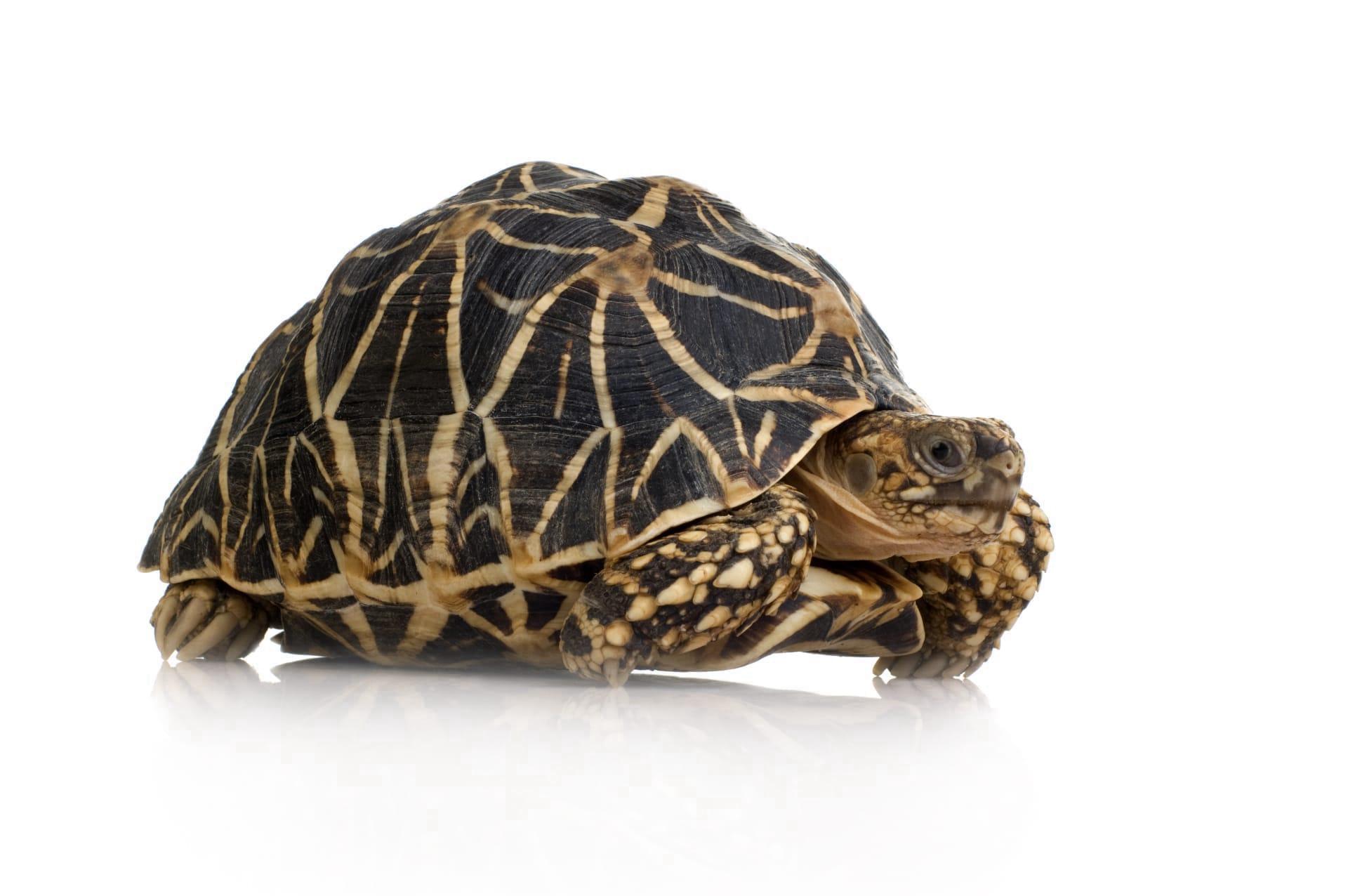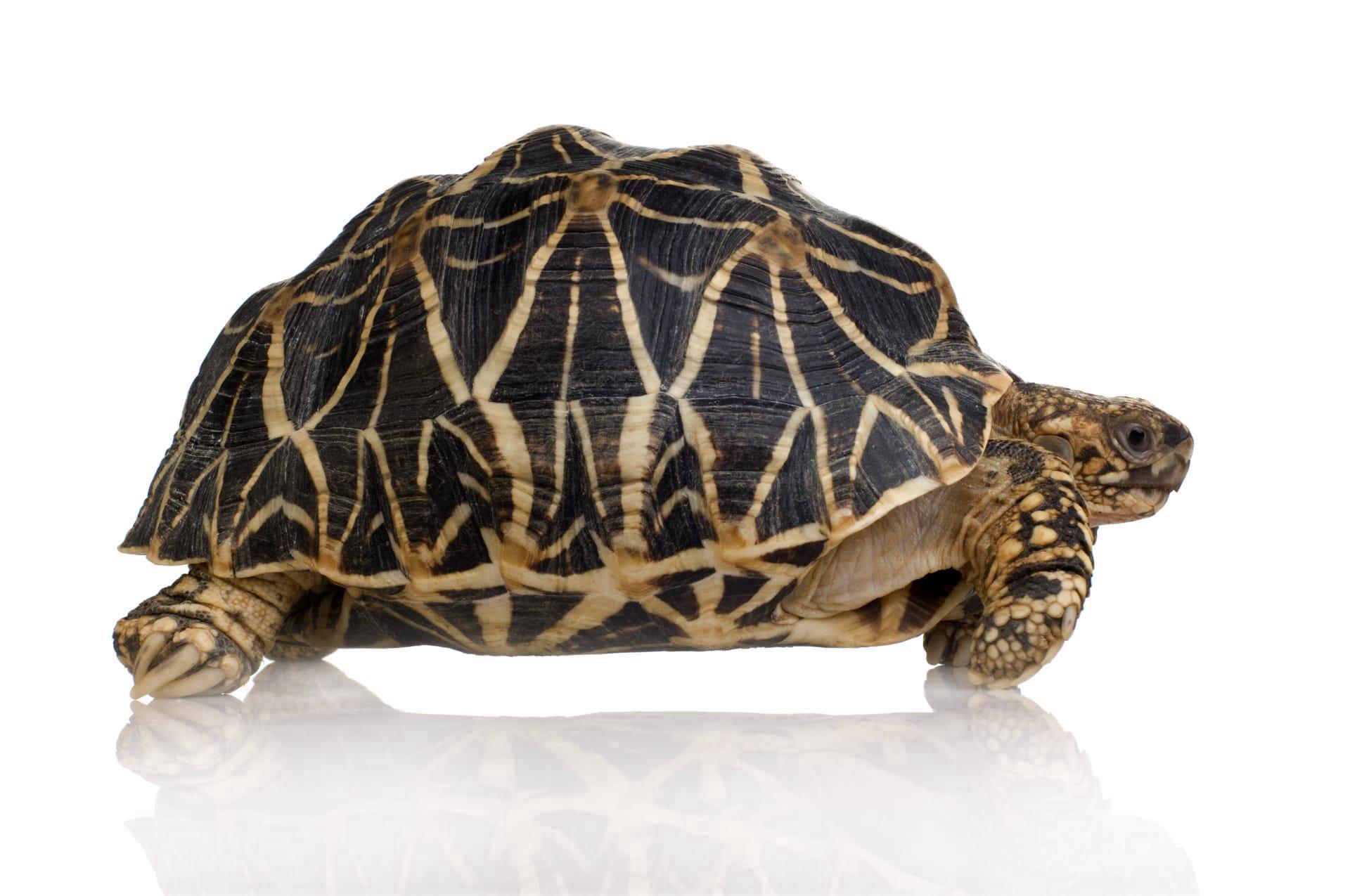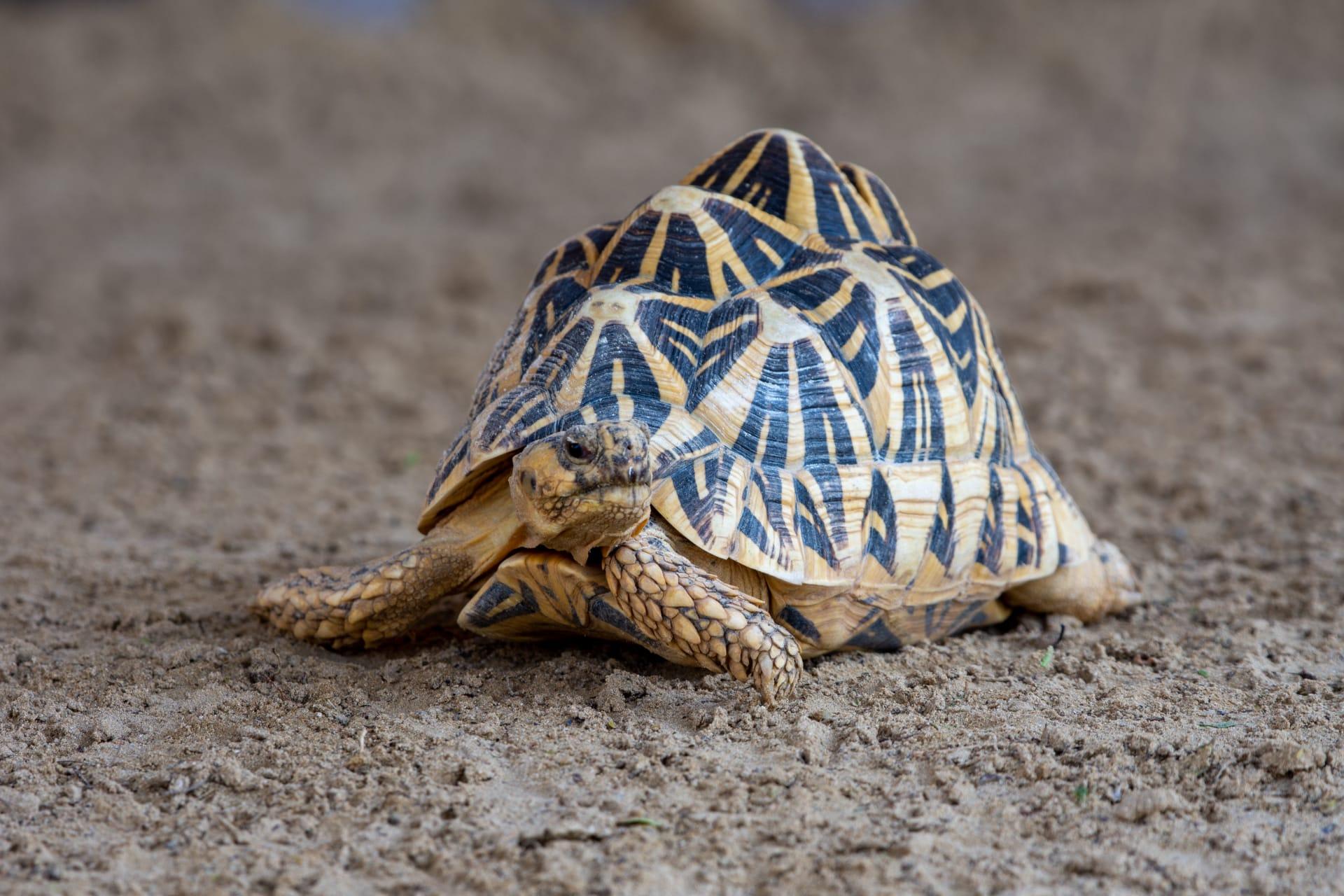Indian Star Tortoise Trivia
- Home /
- Trivia Question /
- Animal /
- Indian Star Tortoise Trivia
1
Question: What unique features make the Indian Star Tortoise easily recognizable?
Answer: The Indian Star Tortoise, scientifically named Geochelone elegans, is most renowned for its distinctive shell pattern. Each scute, or plate, on the tortoise's carapace (upper shell) displays a star-like radiating pattern, with yellow lines fragmenting a dark background. This shell, which can grow up to 15 inches in length, not only serves as a defense mechanism but also brilliantly camouflages the tortoise in grasslands and scrub forests, its natural habitats in India, Sri Lanka, and parts of Pakistan.
Question: How does the diet of an Indian Star Tortoise in the wild contrast with that in captivity?
Answer: In the wild, the Indian Star Tortoise is a herbivore, feasting on a diverse diet of grasses, fallen fruit, flowers, and leaves. This varied diet is crucial for their health, providing a balanced mix of vitamins and minerals. In captivity, however, their diet often becomes less varied, primarily consisting of leafy greens like romaine lettuce, dandelion greens, and occasional fruits. This shift can lead to nutritional deficiencies if not properly managed by adding supplements or a more varied range of vegetables and fruits.

2
Question: Is it true that Indian Star Tortoises can survive for days without water?
Answer: This is a misconception. While Indian Star Tortoises are capable of enduring short periods without water, they actually require regular hydration to stay healthy. In their natural habitat, they consume dew and rainwater, and in drier seasons, they may receive moisture from the plants they eat. In captivity, they need a consistent supply of fresh water for drinking and occasional soaking, as dehydration can lead to serious health issues.
Question: Can Indian Star Tortoises tolerate cold weather?
Answer: Another common misunderstanding is that these tortoises can adapt to cold environments. Native to warm, tropical regions, Indian Star Tortoises are not equipped to handle cold temperatures. They thrive in environments where the temperature ranges from 25°C to 35°C (77°F to 95°F). Exposure to temperatures below 15°C (59°F) can be harmful, leading to respiratory infections and lethargy. It's crucial for pet owners to maintain a warm, stable environment for these tortoises.

3
Question: How does the Indian Star Tortoise communicate?
Answer: While not vocal creatures, Indian Star Tortoises communicate subtly through body language and physical cues. They use head movements, shell positioning, and leg movements to express themselves, especially during mating rituals or when asserting dominance. Young tortoises may emit a faint, whistle-like sound when in distress or seeking attention, but such vocalizations are rare in adults.
Question: What is the lifespan of an Indian Star Tortoise in the wild compared to captivity?
Answer: In the wild, Indian Star Tortoises can live up to 35-80 years, with their lifespan influenced by environmental factors and predator threats. In captivity, however, with proper care and a controlled environment free from predators, these tortoises can live even longer, often surpassing 80 years. This extended lifespan in captivity highlights the importance of a balanced diet, adequate space, and regular health check-ups to prevent common issues like shell deformities and vitamin deficiencies.

4
Question: Are Indian Star Tortoises good at swimming?
Answer: Contrary to popular belief, Indian Star Tortoises are not adept swimmers. They are terrestrial animals, meaning they spend most of their time on land. While they can wade in shallow water and enjoy soaking, deep water can be dangerous for them. Owners should ensure that any water in their enclosure is shallow enough to prevent drowning risks.
Question: Can Indian Star Tortoises climb?
Answer: Yes, surprisingly, Indian Star Tortoises are quite capable climbers. They often climb over rocks and logs in their natural habitat. In captivity, it’s important to ensure that their enclosure has secure boundaries, as they can climb over low barriers. Providing them with climbing opportunities also helps in maintaining their physical health and mimics their natural behavior.

5
Question: Do Indian Star Tortoises hibernate?
Answer: Unlike some tortoise species, Indian Star Tortoises do not hibernate. Their native habitat in tropical regions doesn't experience the extreme temperature drops that trigger hibernation. However, they may show decreased activity during cooler seasons or in response to food scarcity. In captivity, maintaining a consistent warm temperature and food supply is crucial to prevent stress and health issues associated with inactivity.
Question: How do Indian Star Tortoises fare in social settings with other tortoises?
Answer: Indian Star Tortoises can be social but also territorial, especially males. In the wild, they are mostly solitary but may interact during mating season. In captivity, it’s essential to monitor their interactions if housed with other tortoises. They can coexist peacefully, but there might be instances of aggression, particularly between males. Providing ample space, hiding spots, and resources can minimize conflict and ensure a harmonious environment.